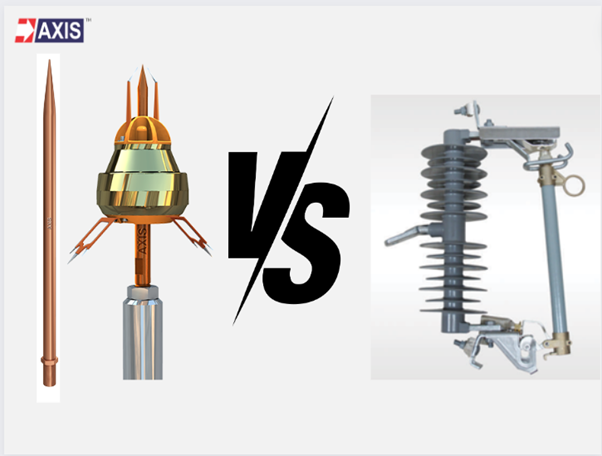
Why is understanding the difference between Surge Arrester and Lightning Arrester crucial? Did you know the UK’s weather department reports over 3 million lightning flashes every day around the world? That means about 44 strikes happen every single second. But if lightning strikes are so common how do people protect themselves and their buildings from them?
Using a technology, called a lightning arrester to reduce and eliminate lightning risks. But the different terms used for arresters sometimes cause confusion. Even electrical engineers mix up Surge Arresters and Lightning Arresters. Therefore, in this blog we will explore the Difference Between Surge Arrester and Lightning Arrester. By the end of this video, you will clearly understand:
A lightning strike releases a huge amount of energy in just a few seconds. This energy can strike buildings or electrical systems, causing serious damage. To protect these structures and systems, we install Lightning Arresters at their highest point.
Lightning Arresters are key components of a comprehensive Lightning Protection System. They protect the power system by creating a low-resistance path for lightning charges to follow to the ground. This way, the charges are safely grounded, and the electrical systems remain safe from lightning damage.
There are mainly two types of lightning arresters available in the market:
Conventional lightning arresters protect simple structures from lightning. These long metallic rods, often made of copper, are placed on the highest points of a structure. They connect to metallic conductors that guide the electric charge safely to the ground, preventing short circuits, fire and other damage.
To protect larger areas or structures with a Franklin rod, you’ll need multiple lightning arresters, additional down conductors, and complex earthing designs. This leads to higher costs, more time, and extra manpower. Therefore, Franklin Rods are generally used in smaller structures such as houses and other residential buildings.
The key purpose of using an Early Streamer Emission lightning arrester is to have a faster conductive point of discharge for the lightning bolt and to ground the fault current safely. A single ESE arrester can cover a larger area, compared to conventional arresters.
Let us have a quick look at how an ESE arrester works. The emission of charged particles from the ESE is generated by storing energy from the ambient electromagnetic field at the time of the lightning events.
Thank you for reading the blog, Axis is a leading manufacturer and supplier of Electrical Components to over 80+ Countries. Talk to our industry expert by visiting our Contact Us section. You can also watch our videos by our experts – click here.
In today's blog, we will discuss Covered Conductors and their accessories. By the end of…
Recently, during the monsoon, a new LED failed. Everyone blamed the brand, but the real…
Can your insulation-piercing connector (IPC) function in heavy snowfall? Read this blog on the deep-freezing…
UL certification represents a recognized standard for safety and reliability in earthing and lightning protection.…
Earth resistance is the measure of how easily electric current can flow from an electrode…
Lightning arrester rods, surge arresters, or lightning conductors are metal rods installed on a building…